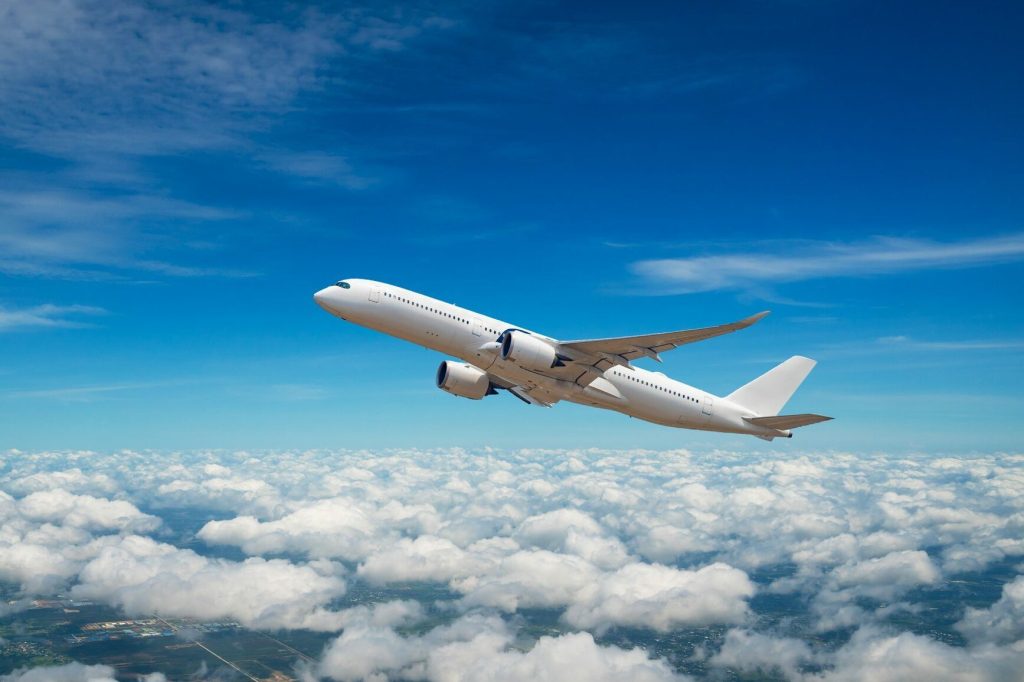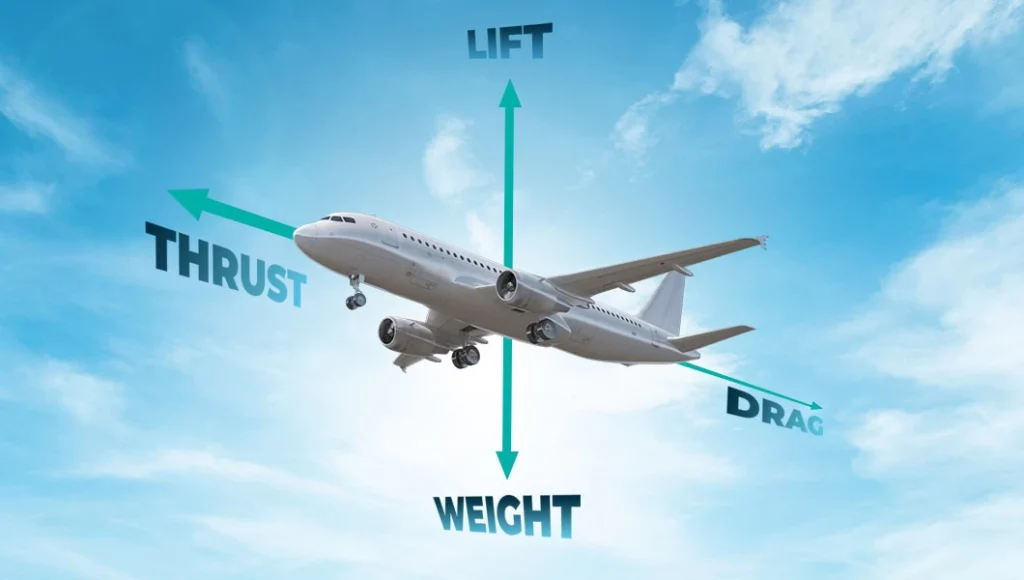
Airplanes are one of the most fascinating inventions in human history. Every day, millions of people step onto a plane, settle into their seats, and trust that this massive machine will lift off the ground, soar through the skies, and land safely thousands of miles away. But how does this happen? What exactly keeps airplanes in the air when gravity is constantly pulling everything down?
Understanding how airplanes fly is not just about physics; it’s also about human curiosity, creativity, and our endless pursuit to conquer the skies. Let’s take a closer look at the science, in a way that’s easy to understand, and explore the wonders of flight.
The Forces That Make Flight Possible
When we talk about flying, four main forces are always at play: lift, weight, thrust, and drag. Imagine them as a team pulling in different directions, and only when they balance in the right way can an airplane take off and stay in the air.
Weight is the simplest to understand; it’s just the force of gravity pulling the plane downward. Lift, on the other hand, is the upward force created by the wings. Thrust pushes the aeroplane forward, usually provided by engines or propellers, while drag is the resistance of air that tries to slow the plane down.
The magic of flight happens when the wings generate more lift than the weight of the airplane, and the engines provide enough thrust to overcome drag. It’s like a carefully choreographed dance between forces, where precision and balance decide whether the plane takes off or stays grounded.
The Role of the Wings
Wings are the true heroes of flight. If you’ve ever noticed, aeroplane wings are not flat; they have a curved shape known as an airfoil. This design is no accident. When air flows over the wing, it moves faster over the curved top and slower underneath. According to Bernoulli’s principle, faster-moving air creates lower pressure, while slower-moving air creates higher pressure.
This pressure difference generates lift, the force that counters gravity and allows the plane to rise. But that’s not the full story. Angle also plays a role. Pilots can adjust the angle of the wings relative to the oncoming air, known as the angle of attack, to control how much lift is generated. Too high of an angle, though, can cause a stall, where the smooth airflow breaks apart and the wings lose lift.
It’s this delicate balance; curved wings, airflow, and angle, that keeps aeroplanes in the sky.
Engines: The Power Behind Thrust
While wings provide lift, they can’t do it alone. Planes need engines to move them forward, generating the thrust required for takeoff and sustained flight. Different airplanes use different types of engines. Large commercial jets typically rely on turbofan engines, which suck in air, compress it, mix it with fuel, and ignite it to produce a powerful stream of exhaust that propels the plane forward.
Smaller planes often use propeller engines, which function like giant spinning fans pulling the plane through the air. Regardless of the type, the goal is the same: provide enough thrust to overcome drag and allow the wings to do their job.
Without engines, airplanes would simply be gliders, relying solely on initial momentum and gravity. With engines, however, they gain the power to cross continents and oceans, connecting people around the world.
The Importance of Aerodynamics

Aerodynamics is the science of how air flows around objects, and it’s at the heart of flight. For an airplane, every surface, wings, tail, body, and even landing gear, is designed with aerodynamics in mind. The goal is to reduce drag and increase efficiency, allowing the plane to travel faster and use less fuel.
Pilots also rely on aerodynamic principles when maneuvering. For example, flaps on the wings can be extended during takeoff and landing to increase lift at lower speeds. Similarly, the tail of the plane helps maintain stability, preventing unwanted spins or tilts.
Even tiny details, like the sleek nose of the airplane or the winglets at the tips of wings, are carefully engineered to improve aerodynamic performance. It’s a constant battle against drag, and aerodynamics is the science that ensures planes win.
The Pilot’s Role in Flight
Although airplanes are marvels of engineering, they don’t fly themselves, at least not entirely. Pilots play a crucial role in ensuring that all forces are balanced and the airplane stays on course. From takeoff to cruising altitude to landing, pilots make continuous adjustments, guided by instruments and experience.
During takeoff, for instance, they increase engine thrust until the airplane reaches a speed where lift exceeds weight. Then, with a gentle pull on the controls, the nose of the plane rises, and flight begins. Once airborne, pilots monitor altitude, speed, and fuel efficiency, all while communicating with air traffic control to ensure safe navigation through crowded skies.
Landing, often considered the trickiest part, requires careful alignment, reduced speed, and precision timing. It’s a reminder that, even in an age of autopilot systems, the human touch is still essential in the art of flying.
The Physics of Staying in the Air
One of the most fascinating aspects of flight is how airplanes remain suspended for hours at a time. Once at cruising altitude, planes fly in a delicate balance. Engines provide steady thrust, wings maintain consistent lift, and pilots make minor corrections as needed.
At high altitudes, where the air is thinner, aeroplanes must fly faster to generate the same amount of lift. This is why you’ll often hear about planes cruising at speeds of around 800–900 kilometres per hour. It’s not just about covering distances quickly; it’s about maintaining lift in an environment with less air resistance.
The fact that planes can stay airborne for 10 or even 15 hours at a stretch is a testament to the precision of engineering and the mastery of physics that makes modern aviation possible.
From the Wright Brothers to Modern Aviation
The story of how airplanes fly wouldn’t be complete without a nod to history. In 1903, the Wright brothers made the first controlled, powered flight in Kitty Hawk, North Carolina. Their wooden biplane stayed in the air for only 12 seconds, but it changed the course of history.
Fast forward to today, and we have massive jets like the Boeing 747 and the Airbus A380, capable of carrying hundreds of passengers across continents. We also have supersonic jets, military aircraft, and experimental designs pushing the boundaries of speed and efficiency.
What remains constant is the principle: no matter how advanced the technology, aeroplanes fly because of the same basic forces, lift, thrust, drag, and weight, that the Wright brothers first harnessed over a century ago.
The Everyday Wonder of Flight
For most of us, flying has become routine. We board a plane, buckle up, watch a movie, and land hours later in a new city or country. But when you stop to think about it, flight is nothing short of extraordinary. Huge machines, heavier than trucks, manage to defy gravity and carry us safely through the skies.
It’s a perfect example of science meeting imagination. Humans looked at birds, dreamed of flying, and eventually figured out how to make it happen. The next time you’re on a plane, take a moment to look out the window at the clouds below. It’s a reminder of the incredible science and the human ingenuity that keep us in the air.
Conclusion: How Do Airplanes Fly
So, how do airplanes fly? The answer lies in the elegant balance of forces, the clever design of wings, the power of engines, and the skill of pilots. Together, they create the miracle of flight, turning human dreams into reality.
Flight is not just about physics; it’s about connection. Aeroplanes bring people closer, make the world smaller, and remind us of what we can achieve when science and imagination work hand in hand.
Leave a Reply